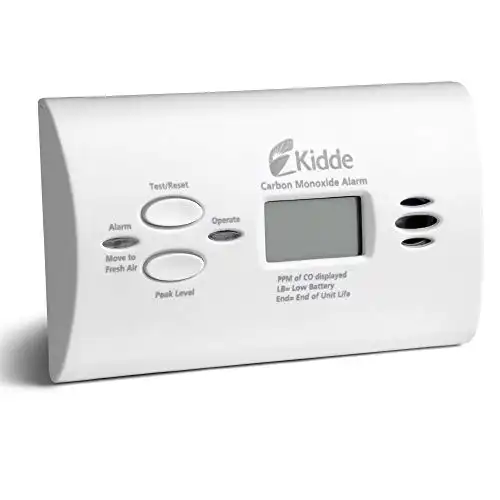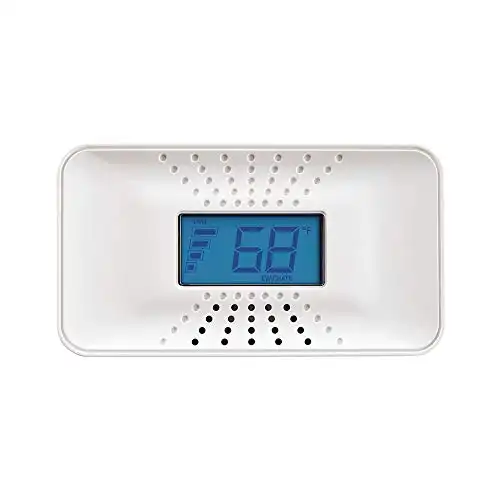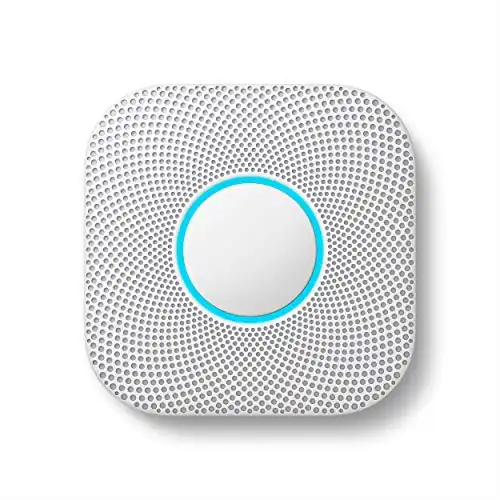Nearly 400 Americans die annually because of carbon monoxide poisoning, usually in their garage. (source)
We’ve all been guilty of running the car in the garage, but we don’t stop to think how dangerous it can be.
Even if the garage door is open, carbon monoxide gas can linger for up to ten hours after your car pulls out of your garage.
That’s why I’ve got carbon dioxide detectors in the critical areas of my house. One of those vital areas is my garage.
Your car is one of the home’s most significant sources of carbon monoxide. That, combined with poor ventilation in most garages, increases the risk of carbon monoxide poisoning. This is especially true during winter when we run gas heaters or warm up our cars inside the garage.
I did some research, as I often do, and wanted to share some of what I found.
For the science geeks like me, I’ll cover some of what carbon monoxide gas does and why it’s so dangerous. Then, I’ll discuss where to place a carbon monoxide detector in your garage. Finally, I’ll talk about the three garage carbon monoxide detectors I’ve tried and which one I recommend.
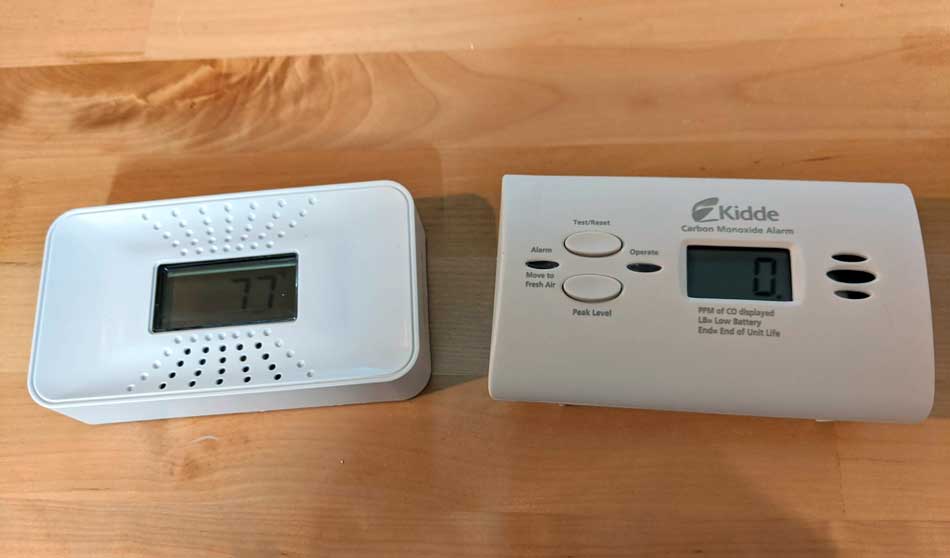
What is Carbon Monoxide & Why Is It Dangerous?
Carbon monoxide gas (CO) is produced whenever a fossil fuel burns. Turning on your car, gas generator, air compressor, or heater creates carbon monoxide.
It can’t be tasted, smelled, or seen but it can kill you.
Even if it doesn’t kill, it can devastate you and your family if there’s a leak or build-up in your garage. Since there’s usually little air flow or ventilation in an enclosed garage, carbon monoxide can seep into the house, endangering everyone inside.
This is why your car should NEVER be left running in an enclosed garage – even if the garage door is open!
Carbon monoxide gas is dangerous for several reasons:
- Carbon monoxide is poisonous to humans and animals: When the human body absorbs carbon monoxide, it prevents the blood cells from being able to absorb or transmit oxygen. This quickly leads to confusion, coughing, change of skin color, shortness of breath, unconsciousness, and death.
- It is hard to detect carbon monoxide: Because it is odorless, tasteless, and invisible, it can’t be detected without carbon monoxide detectors.
- Without oxygen getting to the brain, confusion sets in. Unfortunately, by the time people notice that carbon monoxide levels are too high, they’ve already sustained a significant dose of smoke and carbon monoxide poisoning. Confusion sets in, making getting to a safe space more difficult. At this point, losing consciousness only takes a few more seconds.
Carbon monoxide poisoning is dangerous but is 100% preventable with the right equipment.
Having a garage carbon monoxide detector can often mean the difference between life and death in the event of a gas leak.
What Are Carbon Monoxide Detectors?
Carbon monoxide detectors installed in garages are designed to detect trace amounts of carbon monoxide build-up in the ambient atmosphere before they reach dangerous levels.
They look like smoke detectors. Some smoke detectors also double as carbon monoxide detectors.
Most carbon monoxide detectors are battery-operated, but getting them hardwired is possible.
The EPA recommends having a carbon monoxide detector on each floor of your home and outside each bedroom. They also recommend having carbon monoxide detectors near devices emitting carbon monoxide gas. (source)
Carbon monoxide detectors are critical to have in your garage. It’s an enclosed space with at least one big thing that creates carbon monoxide gas – your car.
If the gas comes from one specific source, a carbon monoxide detector lets you shut it off immediately. Once it’s safe, you can inspect it for malfunction or damage that would cause the carbon monoxide leak.
More importantly, it allows you to open the garage door and air out the space with your garage fans.
High or Low: Where Should Garage Carbon Monoxide Detectors Be Installed?
The EPA recommends carbon monoxide detectors be at least 5′ off the ground, although installing one on the ceiling is OK too.
However, carbon monoxide detectors must be placed at least 15 feet from any fuel-burning appliance. Any closer, you may get false alarms, even if you’re properly ventilating your garage.
To avoid these false alarms, avoid placing your garage carbon monoxide detector in the following areas:
- Within fifteen feet of a CO-producing appliance
- In direct sunlight
- Close to a restroom
- In a direct current of air, such as in front of an air vent
If you have an attached garage, place additional carbon monoxide detectors near the entry door to your home. A CO leak in the garage can spread to the rest of the house and poison everyone else, even though they aren’t in the garage.
Whether you install carbon monoxide detectors on the upper wall or ceiling doesn’t matter. The most important thing is to have one in your garage.
Unless you install one, you’ll never know if there’s a leak.
Why You Need a Garage Carbon Monoxide Detector
As I mentioned, most accidental carbon monoxide poisoning is caused by running your car’s engine in the garage.
It’s even worse if the engine isn’t tuned correctly. This causes it to release more potent fumes than a car operating efficiently.
NEVER run your car’s engine inside the garage – even with the door open!
It is not even safe to warm up a car in the garage for just a few minutes. Iowa scientists determined that running a car engine in an enclosed garage for only two minutes can cause dangerous carbon monoxide levels.
Another common cause of carbon monoxide poisoning is gas-powered space heaters in the garage.
A gas or wood-burning space heater can generate a dangerous amount of carbon dioxide and other hazardous gases in an enclosed space. I recommend using electric instead of gas space heaters in your garage unless you have excellent ventilation.
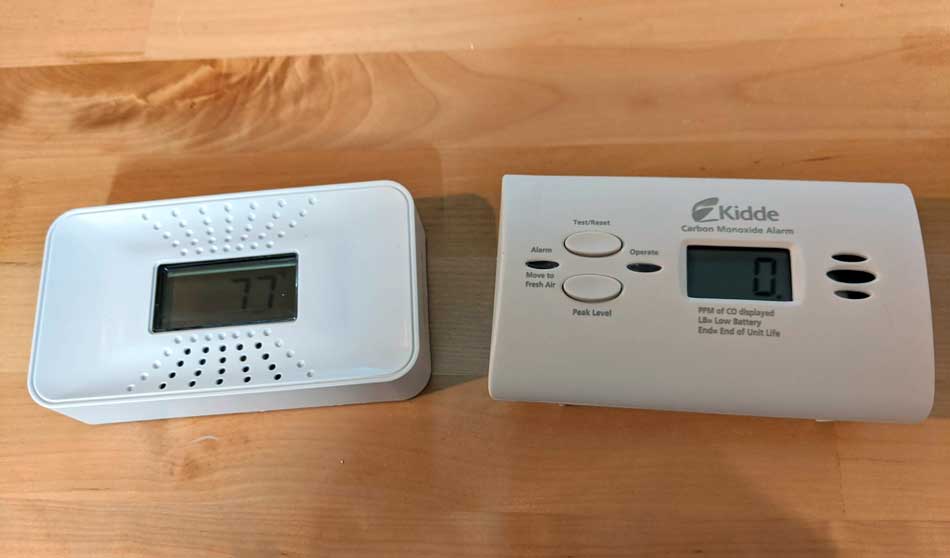
Best Carbon Monoxide Detector for Garages
Since I needed a few around the house, this allowed me to find the best garage carbon monoxide detector. Amazon reviews are a good starting point, but will only get you so far.
Amazon’s top-rated units are the First Alert CO710 and the Kidde C3010D carbon monoxide alarms. Both are inexpensive devices with a digital display and loud alarm. Plus, the build quality is pretty good as well.
I’ll also include the Nest Protect combination smoke detector/carbon monoxide detector. It’s not a fair comparison because this is primarily a smoke detector with CO detection.
But I’ve got two of these in my home and love them, so I’ll include them as a high-end option.
Kidde Carbon Monoxide Detector (C3010D)
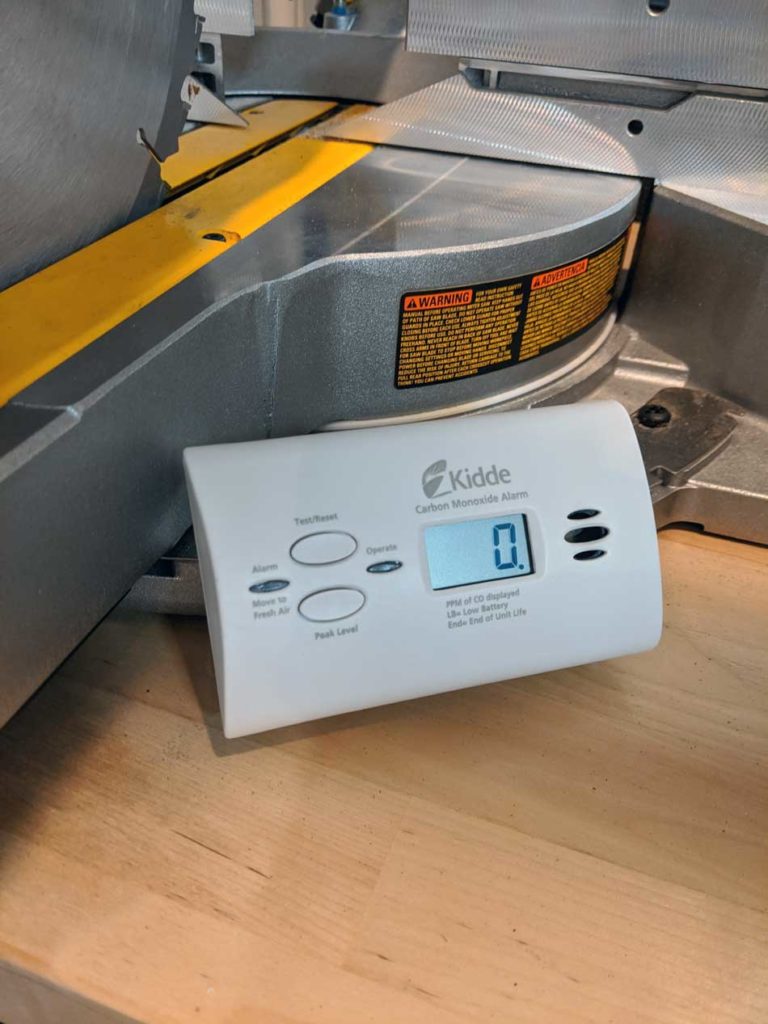
The Kidde is a very budget-friendly carbon monoxide alarm.
I like that it gives a numeric value for how much carbon monoxide it’s detecting. I’m a numbers guy, so it’s more accurate than just a ‘low-medium-high’ answer.
At 85 decibels, the alarm is deafening. It will get your attention, but you’ll probably jump out of your skin when you put the batteries in.
I’m using this at the front of my garage, opposite the entry door to my house. You can see in this picture it is propped up against my DeWalt circular saw.
Once I finish drywalling my garage, I’ll mount it. For now, I like being able to move it as I need to.
- Alert modes with 2 LED lights
- 85 decibel alarm
- Operates on 3-AA batteries
- Easy to read digital display - allows for easy viewing of carbon monoxide levels
- UL Certified, 10-year limited warranty
First Alert Carbon Monoxide Detector (CO710)
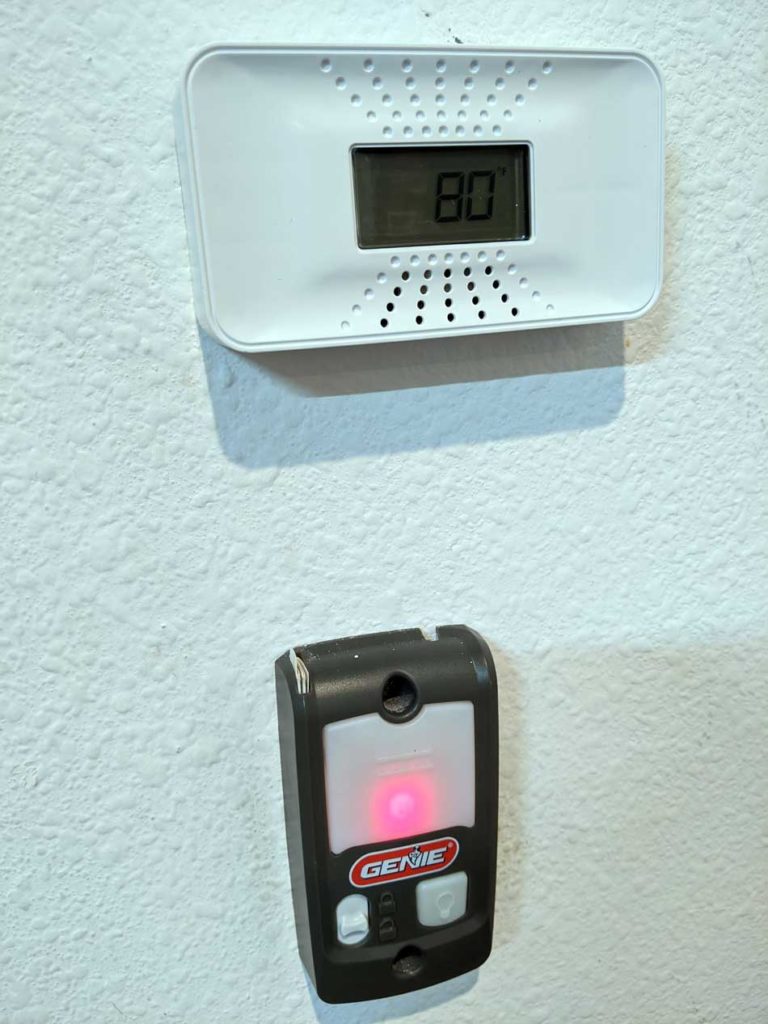
The First Alert simultaneously steps up the game and drops the ball.
I love that it has a built-in thermometer and a backlit LCD screen. If you don’t already have a thermometer in your garage, this could be a great way to kill two birds with one stone.
Another improvement is the sealed enclosure with a built-in, 10-year battery. I hate having to replace batteries. It always seems like there are never enough AA batteries, so this is a welcome addition.
It drops the ball a bit because it only records the amount of carbon monoxide in a bar graph.
While this might appeal to most people, I’d like more detail.
I’ve installed this unit next to my entry door into my kitchen, right above my garage door opener. Installation was straightforward, mounting on two included screws.
The First Alert CO710 is slightly more expensive than the Kiddie carbon monoxide detector.
- Backlit digital display shows temperature and CO levels
- Built-in 10-year lithium battery
- Loud 85-decibel alarm when CO levels reach dangerous levels
- End-of-life signal chirp, so you know when it’s time to replace it
Nest Protect Smoke and CO Detector
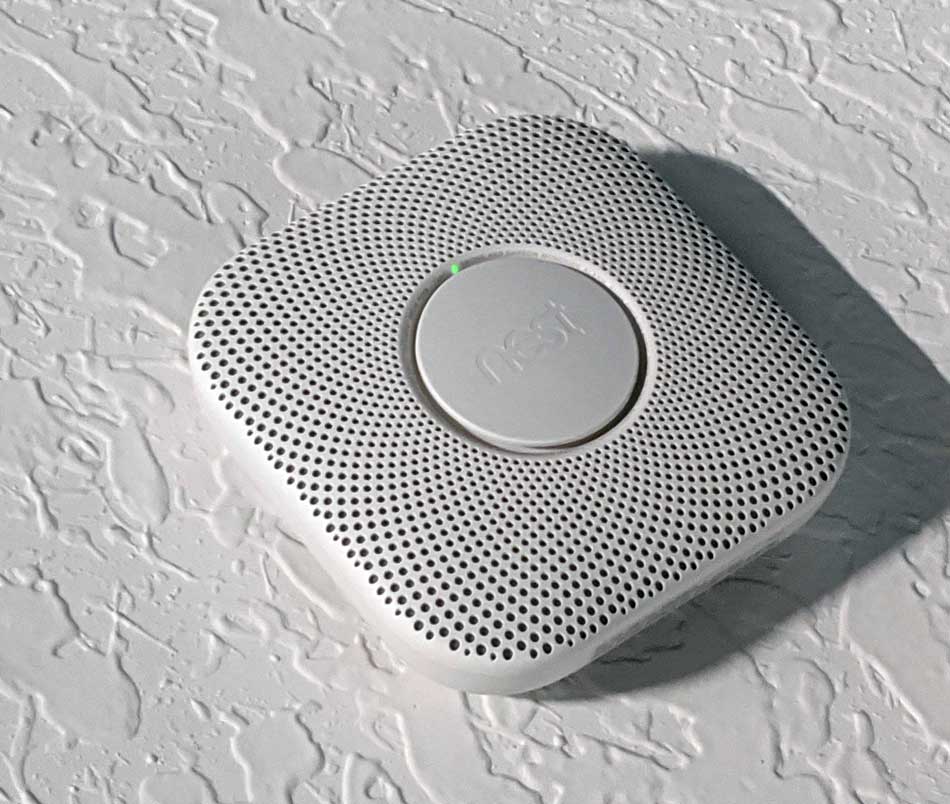
On the high-end is Nest’s Protect smoke and CO detector. If you’re in the Google and Nest ecosystem, I highly recommend at least one of these in your home.
What I love about Nest Protect is that it’s a brilliant solution. I originally bought these to give myself a little peace of mind. When I couldn’t work from home, and my wife was out of town a lot, I wanted to ensure my dog was safe.
With a whole host of smart features available through the Nest app, this helped me monitor my house from anywhere in the world.
Is it overkill for a garage carbon monoxide detector?
Absolutely!
Is it expensive?
Without a doubt.
You are getting a smoke detector and carbon monoxide detector for that price. Still, I doubt anyone will buy one because they need a CO detector.
The Nest Protect thermostat is easily the best garage carbon monoxide detector on this list, but it’s so much more than that.
It comes in both a hardwired and battery-operated version. Both offer a battery backup to help protect you in case of a power outage.
- Phone alerts when there's a problem or the batteries run low.
- Nest Protect alerts you if there's smoke or CO and tells you where it is.
- Detects Carbon monoxide and tells you where it's hiding.
- Automatic nightlight turns on when you walk underneath it.

